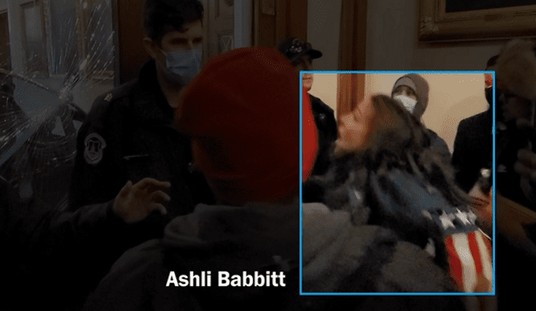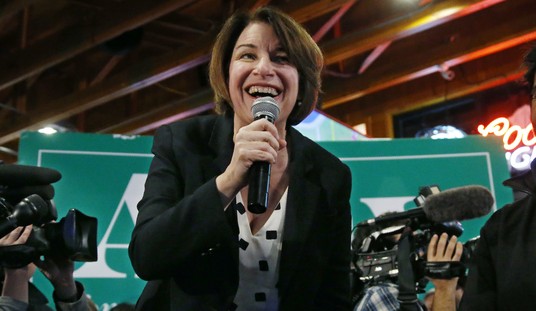Well, that would have to be the alternative explanation to what’s apparently happening, which is that the governor’s race is tightening in Virginia again. Cuccinelli/McAuliffe went from 42/48 in August’s Q-Poll to 41/44 now.
The poll indicates McAuliffe, the former chairman of the Democratic National Committee, at 44% among likely commonwealth voters, with Cuccinelli at 41%. The three point margin for McAuliffe, who lost a bid for the 2009 Democratic gubernatorial nomination, is within the survey’s sampling error.
[snip]
The new poll suggests that Robert Sarvis, the Libertarian candidate who stands at 7%, could hold a key to the November election.
And that last factoid reminds me of the 2009 governor’s race, actually. Only, the one in NJ.
You might not remember this one: Christie/Corzine was one of those that superficially looked a lot more competitive than it actually was. And the reason? Overstating third-party performance:

Turns out that only about half the people who were supposedly voting for Daggett actually did: the rest mostly broke for Christie, thus giving him the election by a rather higher margin than RCP’s rule-of-thumb assessment would have suggested. Which is not surprising, given the way that third parties work in NJ:
| Year | Top 3rd | 2PV |
| 2009 | 6% | 93% |
| 2005 | 1% | 96% |
| 2001 | 1% | 98% |
| 1997 | 5% | 93% |
As the chart shows*, New Jersey elections are not particularly friendly to third parties: the six or so percent that Daggett received was easily in line with what New Jersey typically gives its top third party candidate in any given election. I would like to note, by the way, that I’ve been saying this about NJ and third parties in general for some time (both before [see also here] and after the 2009 election); this is not something that I’ve cooked up for this discussion.
I mention that because now let’s look at the VA third party vote situation.
| Year | All 3rd | 2PV |
| 2009 | 0% | 100% |
| 2005 | 2% | 98% |
| 2001 | 1% | 99% |
| 1997 | 2% | 98% |
| 1993 | 1% | 99% |
| 1989 | 0% | 100% |
| 1985 | 0% | 100% |
| 1981 | 0% | 100% |
Highlighted in red are elections where a third party candidate managed to get on the Virginia ballot; as you can see, the reward for such perseverance is typically somewhere between 1 and 2% of the vote. This is relevant because you have to drill down on the polls showing the current RCP average for the Virginia race:

The breakdown is as follows:
- Quinnipac: Libertarian gets 7%.
- Harper: Libertarian gets 10%.
- Purple Strategies: …Did not poll for third party. They’re listing 19% as not sure.
- Rasmussen: “Some other candidate” gets 7%.
Now, it may very well be that this time the pollsters are detecting a genuine, sustainable Libertarian party surge in a state that has never been known for that sort of thing. Certainly the Libertarians would argue that! Or it could mean that Purple Strategies is correct, and that one-fifth of the electorate has simply not made up its mind yet, six weeks out. That honestly sounds more likely to me – and yes, I’m aware that it’s also the ‘better’ answer for the Republican party, thus making it automatically suspect.
Still, a tightening poll situation isn’t good news for the Democrats. Because the goal for them is to open up a lead – not least because Terry McAuliffe is apparently really bad at campaigning…
Moe Lane (crosspost)
PS: It hardly needs to be said, but: Ken Cuccinelli for Governor.
*Numbers for those two charts from Wikipedia, on the principle that surely they can get election results correct.














Join the conversation as a VIP Member